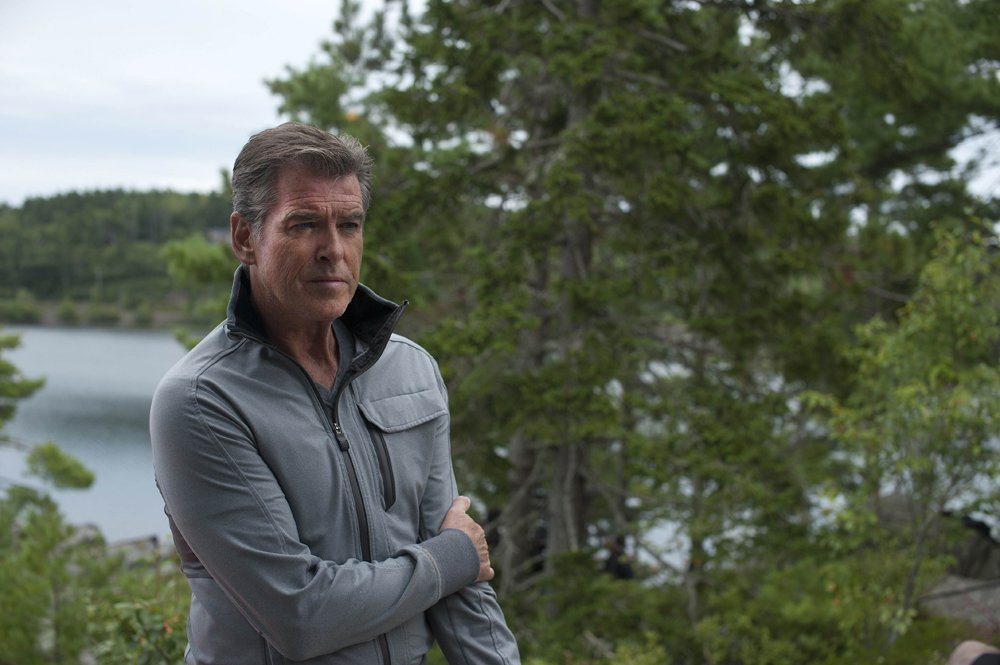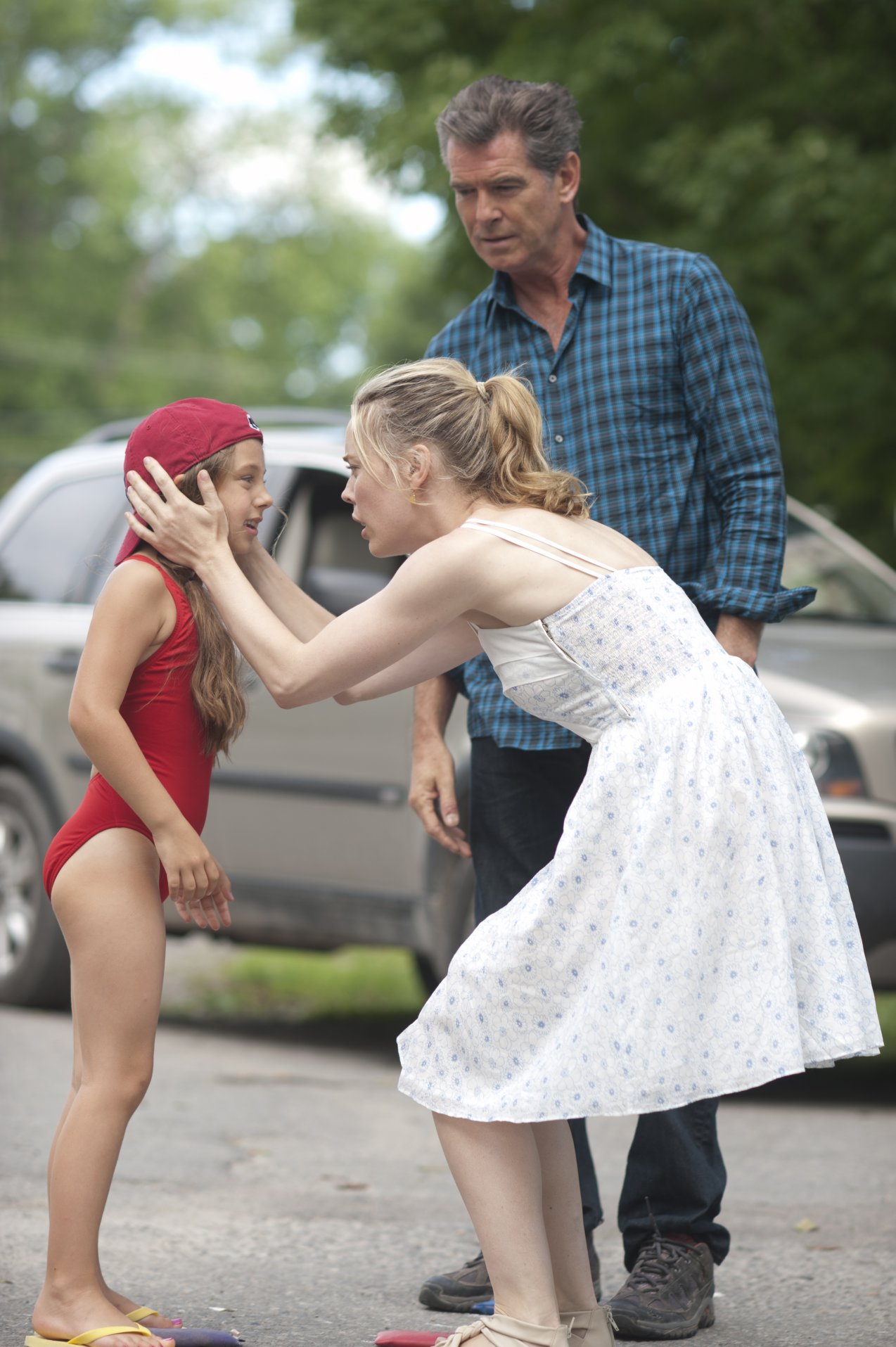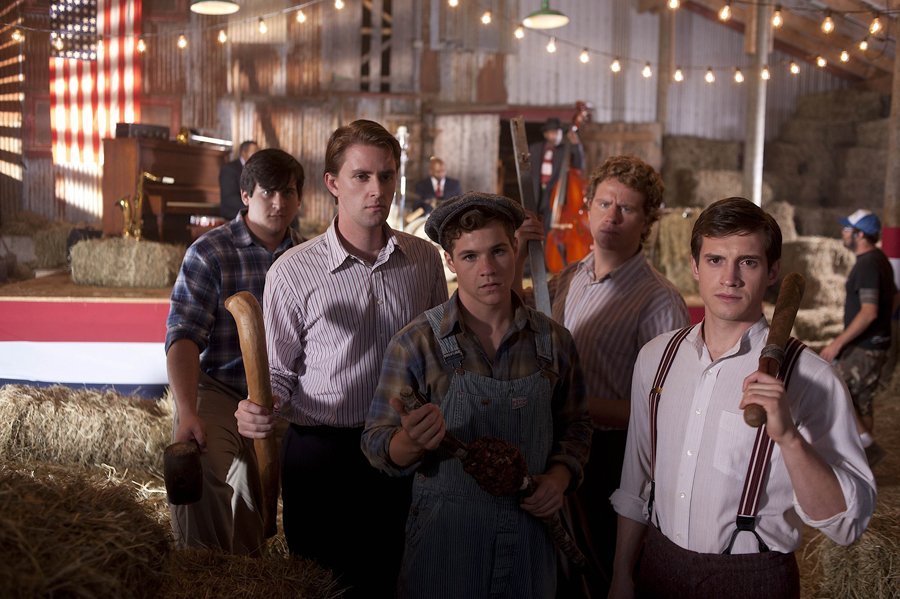December 9, 2011
On Sunday night, December 11, A&E launches the first part of a four-hour adaptation of Stephen King’s novel Bag of Bones, with the conclusion airing the following night. The miniseries stars Pierce Brosnan as Mike Noonan, Annabeth Gish as his wife Jo, Melissa George as Mattie Devore, Anika Noni Rose as Sara Tidwell, William Schallert as Max Devore, with appearances by Matt Frewer and Jason Priestly.
After luring viewers in with period music, the movie quickly unsettles them with a series of jarring images accompanied by loud, percussive noises. In addition to foreshadowing what is to come—or, in some cases, revealing what has already happened—these shots put the viewer on notice: this is not for the faint of heart. Prepare to be frightened and disturbed.
Garris and screenwriter Matte Venne also keep people familiar with the novel off balance by altering certain events. These changes don’t impact the overall story arc for the most part, but will likely take viewers by surprise. A bus accident early in the film is a prime example of this.
Though Garris says he worked on a limited budget, and the miniseries was shot in 40 days, the movie looks fantastic. The cinematography is impressive, the Nova Scotia location is gorgeous (I’m biased—I lived around there for many years) and the special effects are, for the most part, effective. I was a little underwhelmed by the animated tree during a pivotal scene, but that’s my biggest complaint.
Garris gets wonderful performances out of his cast, even those in supporting roles. Matt Frewer (Trashcan Man from The Stand) is restrained and sensitive as Mike’s brother. Max Devore is played by a gleefully malignant William Schallert, who, at 89, appears to be having the time of his life. Deborah Grover is Rogette Whitmore, whose relationship to Devore is never explained. She looks like a character from the Addams Family, except creepier and more insane. Her best scene is the one where she pitches rocks at Mike while Devore cackles at her side.
One of my favorite performances among the minor characters was Canadian actress Deborah Allen, who plays Mike’s cleaning lady, Brenda Meserve, a woman who pretends she doesn’t like to gossip but is clearly in her glory when she can. Her reaction shots when she arrives just as Mike is experiencing or doing something bizarre are priceless.
Anika Noni Rose spends most of her screen time performing on the stage at the Dark Score Lake Fair of 1939, and she can really belt out those songs. Her music sets the tone for much of the movie—at times nostalgic and at others creepy simply because it’s playing when it shouldn’t be. Rose was given the difficult task of having her character explain the mystery behind the haunting. That speech seemed a little overlong given the circumstances, but I guess it was necessary due to the constraints of time to get it all out in one burst.
The success of Bag of Bones, though, rests firmly on Pierce Brosnan’s shoulders, since he is in virtually every scene. At times, the suave, debonair persona he has cultivated since the days of Remington Steele shows through. However, all that comes apart when he is overcome by sorrow after his world crumbles. His grief, tainted by the suspicion that she may have been unfaithful, is palpable. As part of his recovery process, he starts talking to Jo, urging her to respond with a sign: once for yes, twice for no. In a nod to technology that wasn’t as ubiquitous in 1998, when the novel was published, as it is now, the response often comes via smartphone. Though Brosnan and Gish don’t get a lot of screen time together while Jo is alive, it’s enough to establish the strength of their relationship and motivate his reaction to losing her.

The period between Jo’s death and Mike’s decision to escape to their cottage at Dark Score Lake (the cottage isn’t named in the movie) is abbreviated, and Mike’s obsession with crossword puzzles—which wouldn’t be very interesting on the screen—is all but eliminated. His trick of pulling out trunk novels to satisfy his demanding—and annoying—agent (Priestley) is condensed to a single instance.
The script discards any reference to TR-90, using Dark Score Lake as the name of both the body of water and the small town on its shores—one that looks more built up than I imagined from the book. The exterior of Warrington’s is seen in a few shots and resembles Marsden House from the ‘Salem’s Lot more than a resort with a restaurant. The Noonan cabin is rustic but roomy and open. Bunter the moose is front and center in the living room, complete with ringing bell and all that it represents. The walls are decorated with Jo’s disturbing paintings. They are large portraits of women’s faces, and the subjects all seem to be frightened or wary of something. Or, perhaps, haunted. I’m not sure I’d want them hanging in my house. They made me wonder what was going on with Jo to make her feel compelled to paint them. They loom over the bedroom, the halls and the staircase. It is a very effective way to enhance the ominous tone once strange things start to happen in the cabin.
People familiar with Garris’s version of The Shining will find a few common elements. Mike’s cabin is as haunted as the Overlook and the different presences here are at war with each other. Garris enjoys lingering shots on mundane objects that take on an eerie resonance as the film breaks to commercial. A few scenes should call to mind the woman in room 217 as well. Unlike some of the shots in The Shining, though, the scares aren’t gratuitous (I’m thinking of the campy No Sale effect in the cash register, for instance). Garris does a fine job of building suspense and delivers a number of truly frightening and startling moments. Sara Tidwell’s rampages are awe-inspiring. The magnetic letters are executed perfectly. I wondered why there was a “raccoon wrangler” listed among the credits. Now I know. One scene I was looking forward to (one that King often says scared him while he was writing the book), the one that takes place on the basement stairs, is missing. However, during a dream sequence, Jo utters the movie’s most haunting line. Lying on a raft with Mike, she turns her head away and says, “There’s only death out there.” I think the line is even more effective because it is delivered in an off-handed manner without fanfare.
One of the biggest differences between the book and the miniseries is the ages of the characters. In the novel, Mike is in his early forties. While his age isn’t specified in the miniseries, and the actress who plays his wife is 40, no effort is made to make Brosnan look younger than his 58 years. This messes with the chronology a bit. His grandfather is a teenager in 1939, making him well under 40 when Mike was born. Possible, but unlikely.

Mattie Devore is 20 in the novel and her daughter Kyra is a three, whereas Melissa George is 35 and Caitlin Carmichael is 7. Making Kyra older—which means her mother must be at least a little older as well—is understandable. Finding someone capable of playing a precocious three-year-old, especially one who is such a major part of the story, would have been a challenge. Carmichael is cuteness cubed. Pay attention to her when she’s in the shot while other characters are speaking. In one scene she grins up at Mike like a lunatic while he’s talking to Mattie. It’s delightful. Garris and Venne also find an interesting way to inject her into the story earlier than she appears in the book, which means viewers unfamiliar with the novel will likely pay more attention to her once she shows up for real.
However, changing the characters’ ages alters the nature of Mike and Mattie’s relationship. Their twenty-year age difference doesn’t seem as significant. Mattie is clearly smitten by Mike from the beginning—he’s always been her favorite author—whereas Mike doesn’t seem particularly impressed by or interested in her. He helps her in her custody battle because Max Devore throws his weight around, and because Jo asks him to, rather than because he’s got the hots for her. I missed their slowly developing romance—their discussions of books and life, things that drew them closer. Because Mike gradually fell in love with Mattie in the novel, we see her through his eyes as she becomes as vital to him as Jo was. In the miniseries, she never manages to rise above the level of an attractive, bubbly woman with a problem.
The script slips in a few sly King references: an “Annie Wilkes” character at a book signing, one of the authors Mike’s agent mentions as having a book coming out in the spring, a phrase from Lisey’s Story uttered by Mike without explanation. They’re just enough to satisfy fans who seek out such things without getting in the way.
I saw the miniseries over two nights with my wife, who hasn’t read the novel. While I considered watching the whole thing in one night, my wife asked if we could take a break—she found the film scary and wanted a chance to catch her breath before seeing the conclusion. I wondered how they were going to split the novel in a way that would entice viewers to return for the second night. Garris assured me during an interview that they had solved that problem and I have to say that I agree. My wife reported having goosebumps. She wanted Mike to leave the cabin when things started getting weird, but understood that he stayed because his wife was there. She liked the resolution of the story, but wished that Sara Tidwell could have been redeemed in some way. We agreed, though, that neither one of us would have been eager to go for a canoe ride on the lake with Mike once all was said and done.
Bottom line: Garris and his team have put together a very effective, creepy, scary and suspenseful movie. Bag of Bones is a complex novel and certain things had to go to condense it to three hours running time. I can’t imagine what a feature film would have looked like. Less than a skeleton, I suppose. While there were certain things I missed from the book, on the whole I thought it was a very good adaptation. I might even watch it again this weekend.

